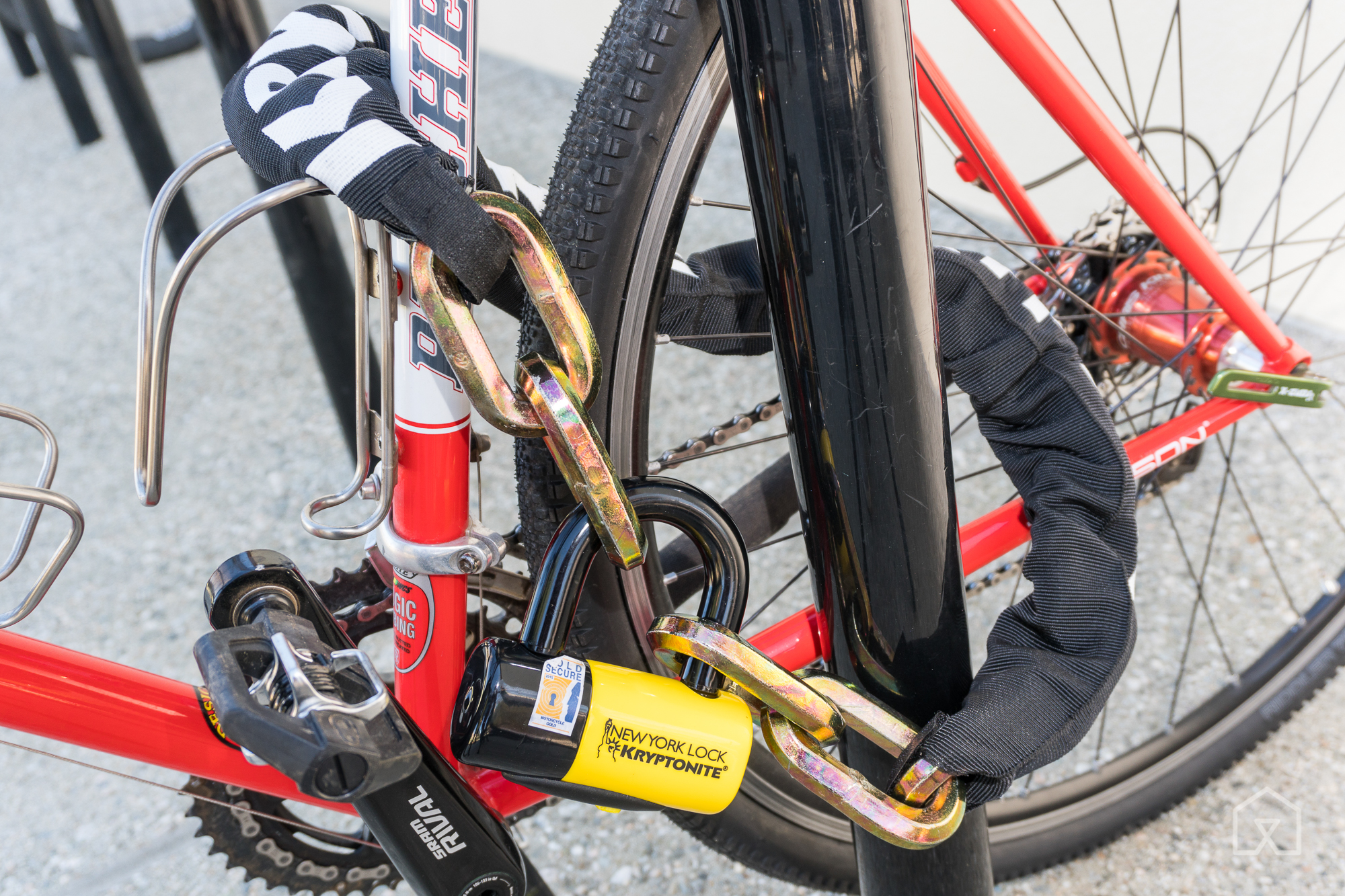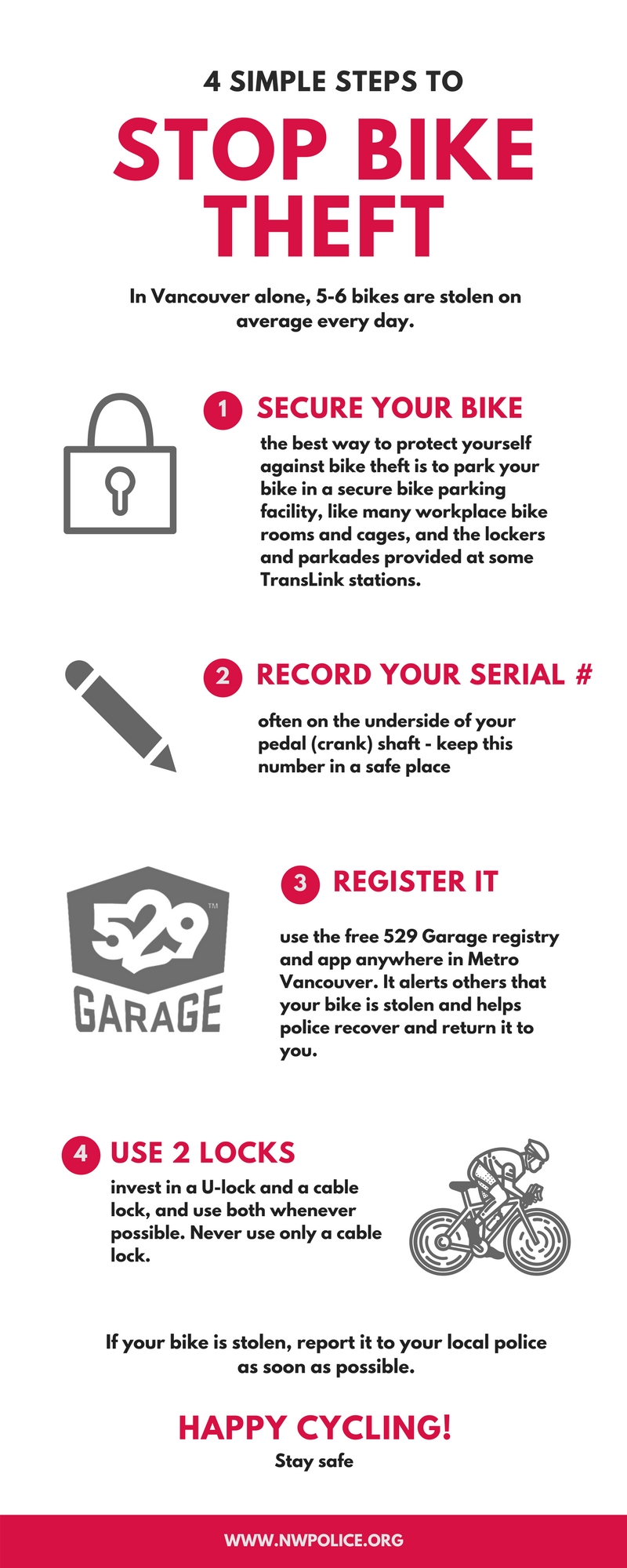The Art of Bike Security: An Overview
Bike theft is an unfortunate reality that cyclists face in urban and suburban areas alike. According to a study by the Bureau of Justice Statistics, approximately 1.5 million bicycles are stolen each year in the United States. To protect your investment and ensure your bike remains where you left it, understanding how to lock up a bike effectively is crucial. This comprehensive guide will explore the various aspects of bike security, providing valuable insights and actionable tips to help you keep your bike safe.
Choosing the Right Lock for Your Bicycle
When it comes to securing your bike, selecting the right lock is paramount. The market offers a wide variety of bike locks, each with its unique features, advantages, and disadvantages. To make an informed decision, consider the following factors:
- Material and construction: High-quality materials, such as hardened steel, offer better resistance to cutting and leverage attacks. Look for locks with robust, well-engineered components to ensure durability and effectiveness.
- Resistance to attack methods: Different locks have varying levels of resistance to various attack methods, such as cutting, drilling, picking, and leverage attacks. Research the lock’s performance against these techniques to gauge its overall security level.
- Lock type: Popular bike lock types include U-locks, chain locks, and folding locks. U-locks are known for their compact size and high security, while chain locks offer flexibility and versatility. Folding locks combine the best of both worlds, providing a portable and secure option.
U-locks, chain locks, and folding locks each have their unique strengths and weaknesses. U-locks are generally more secure and resistant to leverage attacks but may be less flexible in terms of where they can be used. Chain locks, on the other hand, offer greater flexibility, but their larger size and weight can make them less portable. Folding locks strike a balance between security and portability, providing a compact and versatile option for securing your bike.
Measuring Your Bike’s Security Needs
The environment and duration of bike parking play a significant role in determining the appropriate level of security and lock type. Assessing your bike’s security needs involves evaluating factors such as location, parking duration, and the value of your bike. By understanding these factors, you can make informed decisions about the best lock and security measures for your situation.
- Location: High-crime areas or popular bike theft hotspots require a higher level of security. In these cases, consider using multiple locks or a more robust lock type, such as a U-lock or folding lock, to deter thieves.
- Parking duration: Short-term parking requires less security than overnight or long-term parking. For brief stops, a cable lock or lightweight chain lock may suffice, while high-security locks are recommended for longer periods.
- Bike value: Expensive bikes are more attractive targets for thieves. Invest in a high-quality lock and employ additional security measures, such as locking your bike to a secure anchor point or utilizing a GPS tracker, to protect your investment.
Layered security, which involves combining multiple security measures, can significantly deter thieves. By incorporating various locks, security devices, and anchoring methods, you create a comprehensive security system that makes your bike a less appealing target. Additionally, consider parking your bike in well-lit, highly visible areas or inside secure facilities when possible.
Locking Techniques for Maximum Security
Proper locking techniques are essential for minimizing the vulnerabilities of your bike and lock. By employing these techniques, you can create a strong deterrent against bike theft and increase the likelihood of recovering your bike in case of theft. Here are some tips for locking up a bike securely:
- Lock placement: Position your lock so that it secures the frame and at least one wheel to a sturdy, immovable object. Avoid locking your bike to objects that can be easily cut, removed, or manipulated.
- Securing both wheels: Use a secondary lock, such as a cable lock, to secure the other wheel if your primary lock does not secure it. This step ensures that both wheels are protected, reducing the risk of theft.
- Utilizing additional anchors: When available, use ground anchors, bike racks, or other secure points to lock your bike. These anchors provide an extra layer of security and make it more difficult for thieves to remove your bike.
In addition to these tips, consider using a lock that is appropriate for your bike’s value and the level of security required. High-security locks, such as U-locks and folding locks, are recommended for expensive bikes or in high-risk areas. Lower-security locks, like cable locks, may be sufficient for short-term parking or lower-value bikes.
Registering Your Bicycle: An Often-Overlooked Deterrent
Registering your bike is an essential step in protecting your investment and deterring theft. By registering your bike, you create a record of its serial number and other identifying information in a centralized database. This information can be invaluable in helping law enforcement recover your bike in case of theft.
- Benefits of registration: Registering your bike offers several benefits, including increased visibility, proof of ownership, and assistance in recovery in case of theft. Many bike registration services also offer theft alerts and other resources to help protect your bike.
- Finding a registration service: Several bike registration services are available, both online and offline. Research local and national options to find a service that suits your needs. Some bike shops and police departments offer free bike registration, making it easy and convenient to protect your bike.
- Recording your bike’s information: Keep a record of your bike’s serial number, make, model, and any other identifying features. This information will be helpful in case of theft and can aid in the recovery process.
By registering your bike and keeping a record of its information, you take an essential step in protecting your investment and deterring theft. In the event of theft, this information can significantly increase the chances of recovery and help law enforcement track down the perpetrator.
Insurance Considerations for Your Beloved Bike
Protecting your bike with insurance is an essential step in safeguarding your investment. Homeowner’s or renter’s insurance may cover your bike, but it’s crucial to understand the specifics of your policy and the process of adding your bike to it. Additionally, standalone bike insurance options offer specialized coverage benefits that can provide extra peace of mind.
- Homeowner’s or renter’s insurance: Check your policy to determine if your bike is already covered. If not, you may be able to add it as a scheduled personal property item. This process typically involves providing a description and value of your bike, as well as any additional security measures you have in place.
- Standalone bike insurance: Specialized bike insurance policies offer coverage benefits tailored to the unique needs of cyclists. These policies may include features like roadside assistance, crash coverage, and theft protection. Research various options to find a policy that fits your needs and budget.
- Understanding your coverage: Make sure you understand the terms and conditions of your insurance policy. This includes the deductible, coverage limits, and any exclusions or restrictions. By understanding your coverage, you can ensure that you’re fully protected in case of theft or damage.
By considering insurance options for your bike, you take an essential step in protecting your investment and providing peace of mind. Whether you choose to add your bike to your homeowner’s or renter’s insurance or opt for a standalone bike insurance policy, make sure you understand the specifics of your coverage and take the necessary steps to ensure your bike is fully protected.
Additional Anti-Theft Measures and Accessories
Beyond a good lock and registration, several other anti-theft measures and accessories can enhance bike security and deterrence. These include GPS trackers, alarms, and bike covers, which can provide an extra layer of protection and peace of mind.
- GPS trackers: GPS trackers can be attached to your bike and monitored via a smartphone app or website. In case of theft, the tracker can provide real-time location data, helping you recover your bike. Some GPS trackers also offer geofencing capabilities, sending an alert if your bike leaves a predefined area.
- Alarms: Bike alarms can be activated when your bike is moved or tampered with, emitting a loud noise that deters thieves and alerts nearby individuals. Some alarms also offer motion detection and remote activation capabilities, providing an extra layer of security.
- Bike covers: A bike cover can hide your bike from view, making it a less attractive target for thieves. Additionally, a cover can protect your bike from the elements and hide the lock, making it more difficult for thieves to determine the lock type and quality.
By incorporating these additional anti-theft measures and accessories, you can further enhance the security of your bike and deter potential thieves. While no solution is foolproof, a multi-layered approach to bike security can significantly reduce the risk of theft and provide peace of mind.
Staying Informed: Bike Theft Prevention Resources
Staying informed on bike theft prevention is crucial for protecting your investment and staying up-to-date on the latest security measures and best practices. Various websites, forums, and local bike shops offer valuable resources and insights for cyclists looking to enhance their bike security.
- Websites: Bike-focused websites often feature articles, guides, and news related to bike security and theft prevention. Look for reputable sources that provide accurate and up-to-date information on the latest lock types, anti-theft measures, and bike registration services.
- Forums: Online forums offer a platform for cyclists to share their experiences, tips, and advice on bike security. Participate in discussions, ask questions, and engage with other cyclists to gain insights and learn from their experiences.
- Local bike shops: Local bike shops are an excellent resource for bike security information and advice. Many shops offer bike registration services, security assessments, and recommendations for locks and anti-theft measures. Additionally, shops may host workshops, events, or seminars related to bike security and theft prevention.
By staying informed and engaged with the cycling community, you can enhance your bike security knowledge and take proactive steps to protect your investment. Remember, the more you know about bike security, the better equipped you’ll be to prevent theft and recover your bike in case of theft.









